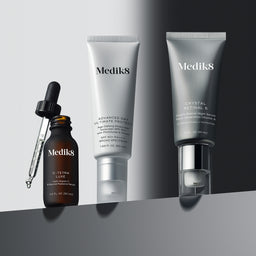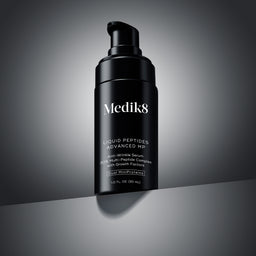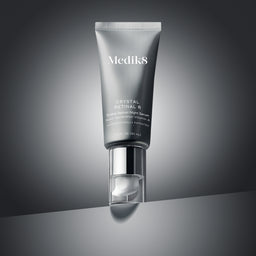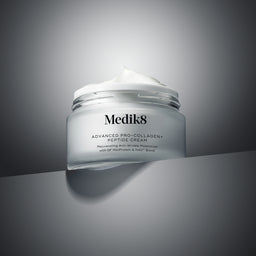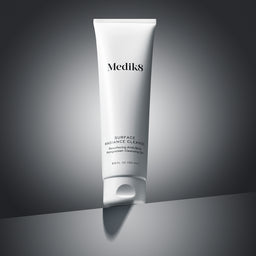Retinol is one of the most effective ingredients in skincare. It helps refine skin texture, soften lines, reduce breakouts, and improve tone. Learning how to use retinol properly is essential to avoid irritation and get the most from your routine.
Understanding Retinoids: Retinol and Beyond
Retinoids are vitamin A derivatives that promote cell turnover and stimulate collagen production. They are used to target concerns like visible aging, acne, and uneven tone. While they share a common foundation, different forms vary in potency, stability, and how they interact with the skin. Knowing which type suits your skin makes it easier to decide how to use retinol effectively and comfortably.
Retinol and Its Benefits
Retinol is a widely used retinoid that undergoes two conversions in the skin to become active. Despite this conversion process, it delivers noticeable improvements in texture, clarity, and tone. Benefits of retinol include smoother skin, fewer blemishes, improved elasticity, and a more even complexion. Many people begin with retinol when learning how to use retinol because it offers a balance between visible results and skin tolerance.
Granactive Retinoid
Granactive Retinoid is a non-irritating retinoid that works without converting into retinoic acid. This makes it a good option for those who want results with fewer side effects, like dryness or flaking. It is often available in different strengths to suit individual experience levels. People with sensitive or reactive skin may find this a gentle alternative while still making progress in a vitamin A routine.
Retinaldehyde: A Potent Alternative
Retinaldehyde is a stronger form of vitamin A than retinol. It converts to retinoic acid in one step, so it acts faster while maintaining better tolerance than prescription retinoids. Retinaldehyde is often used in formulas for aging concerns or stubborn breakouts. It is ideal for those who already understand how to use retinol and are looking to move into more advanced forms. Products like Crystal Retinal offer graduated strengths so users can build up safely over time.
How to Incorporate Retinol into Your Skincare Routine
Adding retinol to your skincare regimen requires planning. This ingredient works best when introduced gradually and layered correctly with other products. Learning how to use retinol effectively can help you avoid irritation while building long-term results. Start with a thoughtful approach and let your skin adjust before increasing frequency or strength.
The Retinoid Journey: The 1-2-3 Rule
When first using retinol, it is important to ease into the process. The 1-2-3 rule is a helpful guide. Begin by applying retinol once a week during the first week. Increase to twice a week for the second week. In the third week, apply it three times. This allows your skin to build tolerance without becoming overwhelmed.
Following this progression can help you avoid common side effects like dryness or flaking. Once your skin adapts, you may gradually move to more frequent use or explore higher concentrations.
Evening Regimen for Retinol Application
Retinol is best applied in the evening. Start your routine by cleansing the skin thoroughly to remove dirt and buildup. After cleansing, wait until the skin is completely dry. This step reduces the chance of irritation, especially during the first few weeks of use.
Once the skin is dry, apply a pea-sized amount of retinol evenly across the face. Follow with hydrating or barrier-repair serums, then seal in moisture with a gentle, non-irritating cream. Understanding how to use retinol in a well-structured night routine helps maximize benefits and minimize disruption to the skin barrier.
Patch Testing for Safety
Those trying retinol for the first time often benefit from a gradual, buffered approach. Before applying retinol to the entire face, it is a good idea to patch test the product. This helps identify any unexpected sensitivity. Choose a small area of skin, such as along the jawline or behind the ear. Apply a small amount of the product and wait 24 hours. If there is no redness, peeling, or discomfort, you can proceed with full application. Patch testing is especially important when using retinol for the first time or switching to a stronger formula. It is a simple but effective step that improves safety and confidence in your skincare routine.
Step-by-Step Skincare Routine with Retinol
Applying retinol in the right order helps reduce the chance of irritation and ensures the active ingredients are as effective as possible. A clear routine creates consistency, which is essential when learning how to use retinol correctly.
Step 1: Cleanse
Start with a gentle cleanser to remove dirt, oil, sunscreen, or makeup. Harsh exfoliating cleansers can heighten irritation, so avoid using them on nights when retinol is applied. Skin should feel clean and comfortable, and not tight or stripped.
Step 2: Tone or Prep the Skin (Optional)
Apply a hydrating toner or essence if your routine includes one. Choose formulas that support moisture without active acids or astringents. Before applying retinol, allow skin to dry fully to reduce the chance of tingling or sensitivity.
Step 3: Apply Retinol
Use a pea-sized amount and apply it evenly across the face. Avoid the immediate eye area and corners of the nose and mouth. These areas are more prone to irritation. Start with a lower concentration and increase only after your skin builds tolerance. This step is where knowing how to use retinol correctly matters most.
Step 4: Follow with Serums
After retinol, apply hydrating or barrier-repairing serums. Ingredients like hyaluronic acid and peptides can improve moisture retention and skin smoothness. These layers provide additional comfort and resilience without interfering with retinol.
Step 5: Moisturize
Finish your routine with a nourishing moisturizer that supports the skin barrier. Look for ingredients such as ceramides, niacinamide, or squalane. This final step helps reduce dryness and flaking while locking in hydration throughout the night.
Ingredient Interactions and What to Avoid
Using retinol alongside the right skincare ingredients can elevate its benefits, while the wrong combinations may lead to sensitivity or irritation. To get the most out of your routine, it's important to understand which ingredients complement retinol and which are best used separately.
Avoid Combining Retinol with Direct Actives
Retinol is a powerful active ingredient that works best when not layered with other strong actives in the same routine. Ingredients like direct vitamin C (ascorbic acid), direct exfoliating acids (AHAs, BHAs), and copper peptides can create instability or increase the risk of irritation when used with retinol. Instead of layering these together, alternate their use. For example, apply vitamin C in the morning and retinol at night. Use acids or exfoliating treatments on nights when you are not applying retinol. This approach gives the skin time to recover and minimizes potential reactions.
Supporting Ingredients for Retinol Use
Several ingredients can help reduce dryness and support the skin while using retinol. Ceramides, niacinamide, and squalane are excellent for reinforcing the skin barrier and improving comfort. Peptides, such as acetyl tetrapeptide-9, can support collagen and elasticity without competing with retinol. Hydrating serums with hyaluronic acid also help maintain moisture balance. These ingredients work well layered after retinol or as part of your morning routine, creating a more resilient and healthy-looking complexion.
Top Retinol Products for Every Skin Type
There is no single retinol product that works for everyone, which is why choosing a formula that aligns with your skin type and goals is essential. The right product can help you stay consistent, improve tolerance, and get better results over time. Whether your focus is reducing fine lines, tackling blemishes, or maintaining overall skin health, a tailored approach makes all the difference.
Retinol 3TR is a beginner-friendly option with a 0.3% concentration, designed for those just learning how to use retinol. It absorbs easily and supports collagen production while remaining gentle enough for early use. Those who have built up more tolerance may benefit from Retinol 6TR or Retinol 10TR, which offer higher strengths for improved texture and firmness. For delicate areas, such as around the eyes, a targeted eye-specific retinol formula can help smooth fine lines without irritation.
Tips for Enhancing Retinol Benefits
People often abandon retinol too soon due to initial side effects that can actually be managed with the right support. Getting the most out of your retinol routine involves more than just applying the product. Small adjustments to your skincare approach can help maximize the results and minimize irritation.
Retinol Formulations with Squalane
Retinol can sometimes dry out the skin, especially in the early stages of use. Formulas that include squalane help prevent this by delivering added moisture and softness without clogging pores. Squalane mimics the skin’s natural oils, making it an ideal companion to retinol. Products that pair retinol with squalane create a more comfortable experience and support long-term consistency.
Eye-Specific Treatments and Retinol
The delicate skin around the eyes benefits from targeted treatments that work alongside your retinol routine. Instead of applying retinol directly to the eye area, consider using eye serums that focus on hydration and firming. A Multi-Peptide Eye Serum helps reduce signs of fatigue and smooth fine lines with peptide-rich support. Caffeine-based solutions can help minimize puffiness and dark circles, making it a strong addition to your nighttime regimen when used in a different step than your retinol.
Together, these products help enhance your routine by supporting hydration, targeting signs of aging, and keeping sensitive areas calm and balanced.
